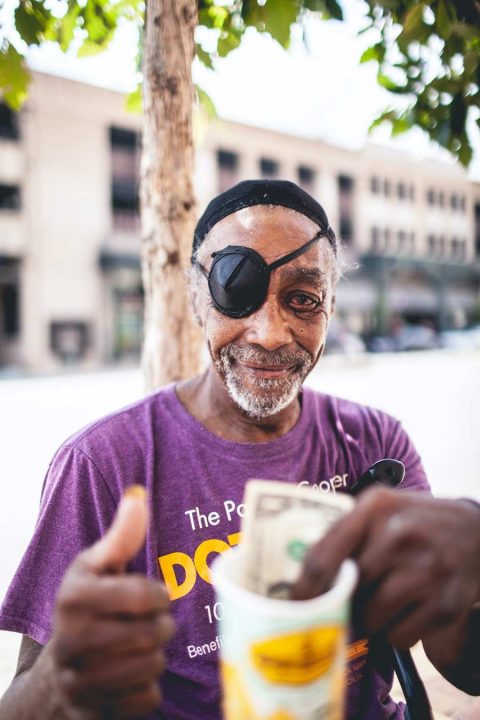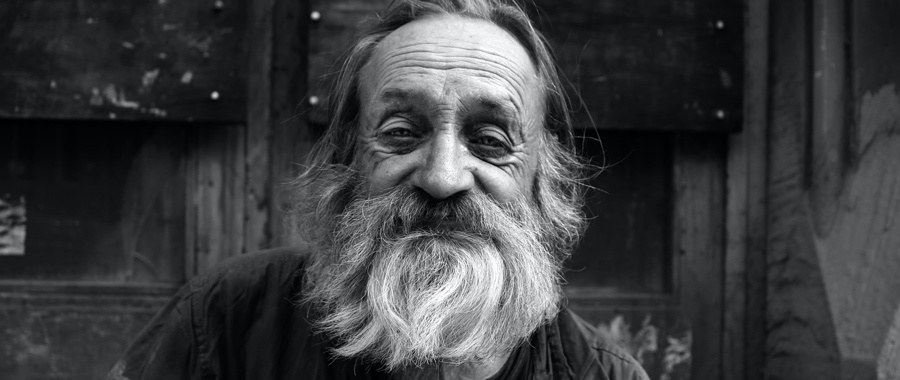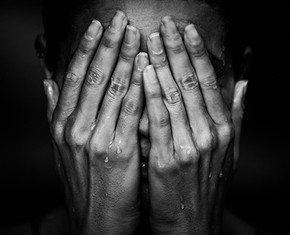The views expressed in our content reflect individual perspectives and do not represent the authoritative views of the Baha'i Faith.
“What’s the main cause of homelessness?” a news reporter asked me. “Lack of a home,” I said. “No, really,” he replied, chuckling as though I were kidding him. “No – really,” I replied, dead serious.
Some societies have figured out this very basic equation, and some haven’t. Personally, it took me a few years of working with homeless people to get it. The Baha’i teachings also helped me understand that reality:
O Thou divine Providence, pitiful are we, grant us Thy succour; homeless wanderers, give us Thy shelter; scattered, do Thou unite us; astray, gather us to Thy fold; bereft, do Thou bestow upon us a share and portion; athirst, lead us to the well-spring of Life; frail, strengthen us that we may arise to help Thy Cause and offer ourselves as a living sacrifice in the pathway of guidance. – Abdu’l-Baha, Selections from the Writings of Abdu’l-Baha
That line from Abdu’l-Baha’s prayer – “homeless wanderers, give us Thy shelter” – resonated with me deeply, and helped me find a path from the old traditional way of dealing with homelessness to a completely new and much more effective one. Let me tell you the story.

When a few friends and I founded Homeless Health Care Los Angeles in 1985, we initially used the standard social work model of dealing with homelessness. That model usually goes like this: a homeless person has to climb an ascending ladder of challenges to get housed, first by agreeing to enter a substance abuse or mental health counseling program, then getting sufficiently recovered or clean and sober to merit a stay in temporary accommodations like missions or shelters, then finding work, then finally being rewarded for all of that effort to get their life back on track with a place to live.
In this traditional model, the rules and restrictions make each rung of that ladder a pretty hard climb. If you fall off the wagon of sobriety, for example, with even a minor temporary relapse, you go back down to the first step to start all over again. Relapse in your treatment program, and most traditional shelters won’t even give you a bed to sleep in.
But as the homelessness crisis in America ramped up in the ‘80s and ‘90s, providers of services like the organization I helped run soon began to realize that this old social work model tended to unintentionally victimize the people it attempted to serve.

Here’s a real-life example I encountered in L.A.: a woman named Margaret (not her real name) showed up at a temporary homeless mission on Skid Row with alcohol on her breath. The mission had a bed available, but its rules enforced sobriety as a pre-condition for staying there, so Margaret got turned away. That night, sleeping outside in the rain, a poisonous spider bit her on the foot. She had no health insurance, so couldn’t see a doctor. Instead, she went to the hospital emergency room, but it took her two days to get there because the painful bite made it hard to walk, and there were no buses. The hospital couldn’t save her foot, and amputated it. While there, she contracted pneumonia from her exposure to the elements. She was prescribed antibiotics and started to recover, but was then released prematurely from the hospital – to the streets. It’s still raining, and she’s on crutches. Three days later, Margaret died.
In Margaret’s case – and in the cases of hundreds of thousands of homeless people just like her – we could conceivably assign plenty of blame. Her alcoholism; the lack of public services like clinics and transportation; the dearth of housing for everyone; the enormous disparity of poverty and wealth in our culture – all of these contributed to her needless death. But the main reason, the cold hard fact that the mission’s rules turned her away, reveal the true problem: most homeless people have no place to literally seek shelter from the storm, which reveals the lack of compassion we have for other human beings as a society.
The Baha’i teachings say that we could prevent such avoidable tragedies if we only developed the common consciousness of the unity of the entire human family:
All are the servants of God and members of one human family. God has created all, and all are His children. He rears, nourishes, provides for and is kind to all. Why should we be unjust and unkind? This is the policy of God, the lights of which have shone throughout the world. His sun bestows its effulgence unsparingly upon all; His clouds send down rain without distinction or favor; His breezes refresh the whole earth. It is evident that humankind without exception is sheltered beneath His mercy and protection. Some are imperfect; they must be perfected. The ignorant must be taught, the sick healed, the sleepers awakened. The child must not be oppressed or censured because it is undeveloped; it must be patiently trained. The sick must not be neglected because they are ailing; nay, rather, we must have compassion upon them and bring them healing. – Abdu’l-Baha, The Promulgation of Universal Peace
After dealing with homelessness for a few years, this loving view of the world – that humanity comprises one extended family, who all merit our care and compassion, regardless of their condition – began to inform my approach to the homeless people I met. I started to see the poorest and most unfortunate people in our society, not as some abstract category called homeless, but as my real brothers and sisters. I started to realize that my duty as a Baha’i and as one of the members of the human family was not to judge others, but to help them:
Who are we that we should judge? How shall we know who, in the sight of God, is the most upright man? God’s thoughts are not like our thoughts! … How then can we flatter ourselves and despise others?
Let us therefore be humble, without prejudices, preferring others’ good to our own! Let us never say, “I am a believer but he is an infidel”, “I am near to God, whilst he is an outcast.” We can never know what will be the final judgment! Therefore let us help all who are in need of any kind of assistance.
Let us teach the ignorant, and take care of the young child until he grows to maturity. When we find a person fallen into the depths of misery or sin we must be kind to him, take him by the hand, help him to regain his footing, his strength; we must guide him with love and tenderness, treat him as a friend not as an enemy. – Abdu’l-Baha,Paris Talks
These Baha’i teachings, so kind and so compassionate, helped lead me to a new way to deal with homelessness called “Housing First.”

The Housing First model – created in the ‘90s by psychologist and homeless activist Sam Tsemberis – has the primary goal of quickly providing safe, affordable, permanent housing to homeless people, without any preconditions.
But the Housing First approach to homelessness doesn’t only provide housing – it also makes a broad range of wraparound services like counseling and addiction treatment available to participants. Tsemberis based his Housing First ideas on studies which showed that when people experiencing homelessness are given safe, stable, affordable housing, they can better address the other problems and needs in their lives, such as substance use disorders and mental illness – which reduces the frequent use of hospital emergency departments and psychiatric hospitalizations.
In other words, the Housing First approach reverses the usual steps in the traditional treatment model, recognizing that people have the best chance of improving if they’re first stabilized in a home. That model, now in use in many places around the world, has also proven that it reduces the overall costs to society.
As we studied and then implemented this new model for homeless people in our non-profit service agency, I learned from my research into the Baha’i teachings that my Faith’s principles also recommend a housing first approach, by asserting that housing is a human right for all people. In the next essay in this series, we’ll explore the basic human right to housing in international law and in the Baha’i teachings.
















Comments
Sign in or create an account
Continue with Googleor